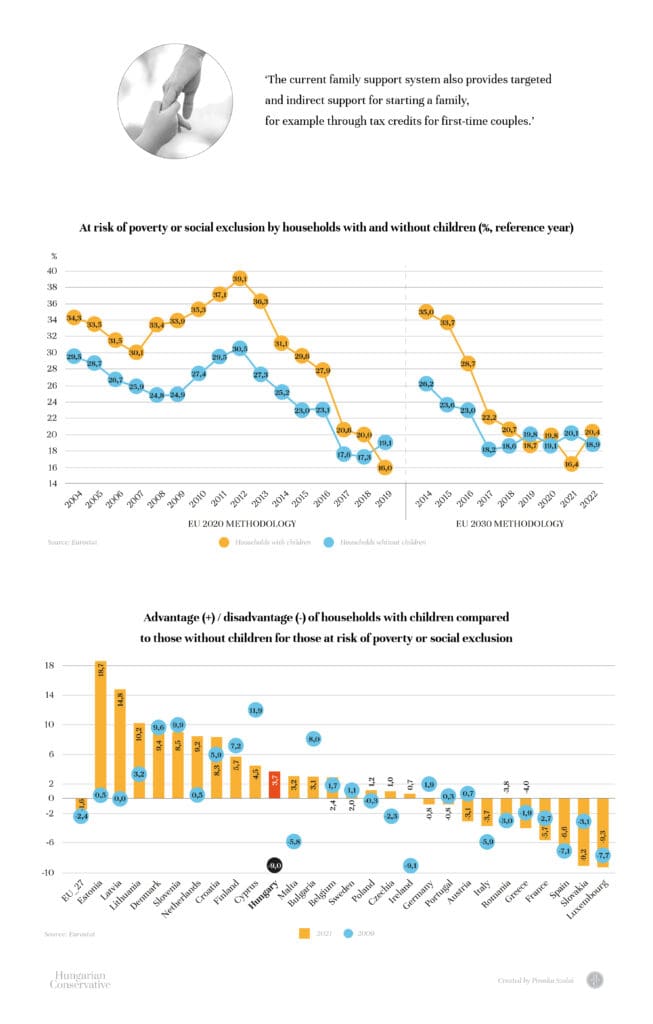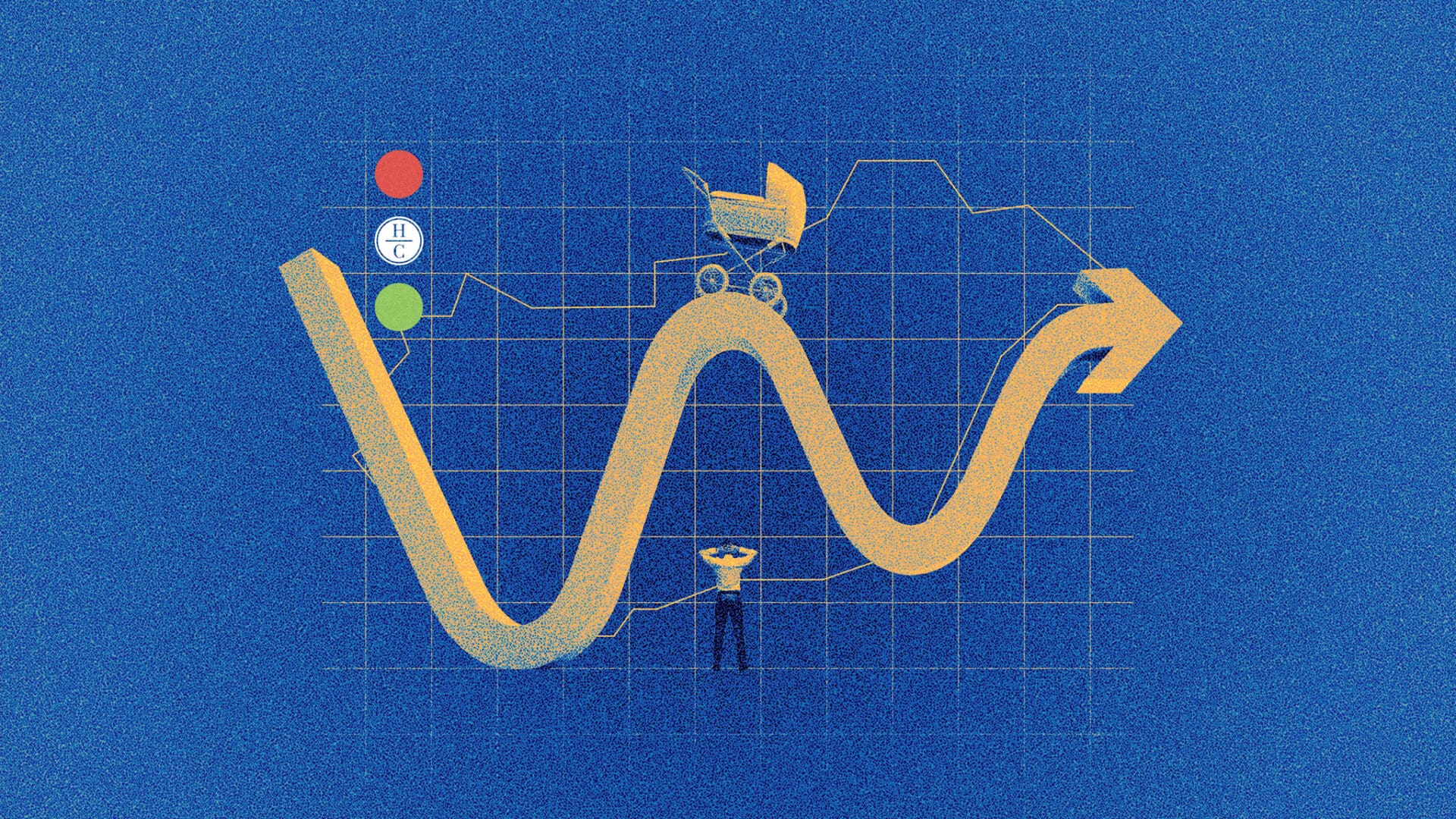Hungarian Conservative has launched a ten-part series of articles on the past decade and a half of the Hungarian economy and society, titled ‘Revealing the Facts’. Rather than looking at a lot of different, isolated data it is worth providing an overview, comparing and analysing trends over time, in order to understand the details. In the first instalment of our series we looked at inflation. In parts two and three we highlighted that growing incomes and the security of livelihood, both of which have been experienced under the conservative governments since 2010, are of primary importance for Hungarians. The fourth analysis of the series explored the economic growth trends of the past decades. In part five important facts about the successful reduction of poverty in the country by conservative governments were revealed. This article focuses on how the current complex family support system evolved.
The Hungarian government’s family policy has attracted a great deal of international attention, as the right-wing government led by Viktor Orbán has developed, in several stages since 2010, a comprehensive, multi-component family support system that encourages young people to live together and have as many children as possible from the time they start their independent lives, with a range of benefits. Hungary spends between 4.5 per cent and 5 per cent of GDP directly on family support, but this percentage is much higher when supplemented by other measures, whether in a crisis period or not.
This was not always the case: before the change of government in 2010, the left-wing government only offered some benefits to those with several children, but did not encourage childbearing, and in fact a series of austerity measures, the tax system and high unemployment discouraged many people from having children. To put it bluntly, instead of support, women were given an ultimatum: give up their careers or have children.
Having Children Should Not Be Condemnation to Poverty
In 2010, having children in our country meant for many people an insurmountable financial burden, the risk of poverty and, for mothers with young children, the risk of losing their jobs. In the European Union, we had the second highest surplus of people with children at risk of poverty (9 percentage points), as shown in the graph below. As a result, the number of births fell by 11,000 between 2008 and 2011, almost all of it among married and working women. At the same time, in Slovenia, where the at-risk-of-poverty rate for those with children was 9.9 percentage points lower than for those without, fertility increased, and more children were born – even at the time of the crisis.
In fact, in 2020 and 2021 both the number of births and the fertility rate increased in our country during the COVID-19 pandemic because the poverty and disadvantage of those with children relative to childless people decreased to such an extent that
having children was no longer a financial disadvantage in 2019 and 2021.
Demographic trends will be analysed in detail in another article.

Components of the Hungarian Family Support System
Today, the Hungarian family support system is more diverse and generous than ever before. The most popular elements are:
- Financial benefits: From the last month of pregnancy until the child is six months old, the mother receives full average earnings. At the time of birth, parents can receive a maternity allowance of almost HUF 66,000. From the age of six months until the child is two years old, mothers receive 70 per cent of average earnings, up to a maximum of 140 per cent of the minimum wage, which averaged HUF 208,000 in 2022. And from the age of two to three, a smaller allowance of around HUF 31,000. Up to the age of 18, a family allowance of almost HUF 24,000 is paid. The figures are averages published by the Hungarian Central Statistical Office.
- Tax benefits: This is not an expenditure, it does not appear in the statistics or in the government budget, because the government does not collect and redistribute it, but leaves it at the employee. Examples of such tax benefits are the partial family tax credit after each child, the full tax credit for mothers with four or more children and the tax exemption up to the average income for mothers under 30. And don’t forget that to mitigate the impact of Covid (at the beginning of 2022), families with children were refunded income tax up to the average income at the time of the 2021 tax return. This level of tax relief has never been seen before in the history of the Hungarian economy.
- Subsidized loans: The most popular of these are the so-called Baby Awaiting Loan (HUF 11 million free of charge; free use loan) and the preferential loan for families to build a home (up to HUF 15 million for one child, up to HUF 30 million for two children and up to HUF 50 million for three children). The state also takes over part of these subsidized loans and student loans when the child is born, i.e. it provides non-repayable support.
- Subsidized savings: The best-known form of subsidized savings is the baby bond. This is a form of public savings with an interest rate of 3 per cent above inflation, which can be paid in on a regular or occasional basis, with the state making an annual payment in addition to the interest, and which can be used when the child reaches adulthood.
- Investment subsidies: Such as the car purchase subsidy for large families and the home renovation subsidy, which was available until December 2022 and was already available for one child.
- Other subsidies: For example, the natural gas subsidy for large families or the kindergarten subsidy for children in private kindergartens.
The fact is that
most Hungarian family benefits are available to working people.
Unfortunately, there are no HCSO or Eurostat statistics covering all expenditure, so it is difficult to make comparisons with other EU countries. Eurostat does provide separate figures for family and child protection expenditure within government social expenditure, but this is only a small part of total family support. The most recent figure is from 2022, when Hungary spent 2.6 per cent of GDP on this, above the EU average (1.9 per cent and the fifth highest share among Member States after Denmark, Luxembourg, Finland and Poland. According to the government communication, in recent years we have spent 4–5.5 per cent of GDP on family benefits overall.
Support for Young People at the Start of their Lives
The current family support system also provides targeted and indirect support for starting a family, for example through tax credits for first-time couples.
Young people benefit not only when they start a family: employees under 25 do not have to pay income tax up to the average income threshold. This means that a young person working full-time can receive tens of thousands of forints more per month, even if they work for the minimum wage. However, the tax credit is only linked to age, so part-time and casual workers under the age of 25 will also benefit.
The government’s latest measure also supports first-time homebuyers: if you want to buy a house with a loan but are not eligible for government-subsidized loans, the bank can ask for a down payment of up to 10 per cent. Normally, financial institutions can ask for a deposit of up to 20–30 per cent, depending on the amount of the loan and the property being bought.
The government is also helping people to start living together, partly through the Women40 scheme. The idea is to allow women to retire after 40 years of work, even if they have not yet reached retirement age, which is currently 65. Many women take this opportunity to be present when their children start a family or have children, and to offer them as much help as possible.
Demographic Crisis: Having Children Instead of Migration
The Hungarian government has consistently stressed that the ageing of developed countries and of Western societies can be halted by encouraging people to have children.
This has been met with scepticism, with many arguing that demographic challenges such as the sustainability of the pension system and labour shortages should be addressed by encouraging immigration. However, migration does not seem to solve these challenges, as illegal immigrants tend to stay illegally in the host country, are unwilling to find work and thus become an additional burden on the budget.
Piroska Szalai is a labour market expert, a researcher at Economy and Competitiveness Research Institute of the Ludovika University of Public Service.
Kristóf Nagy and Mátyás Zsolt Varga are journalists at Mandiner.
Related articles:








